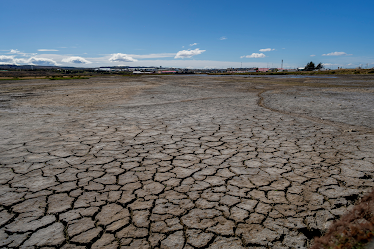Chile
Jassibe Isidro// Geo 9 Blog
Week 1: Hazards, Disasters, and Catastrophes are all very well known and feared amongst humans. They often get confused with each other and few individuals know how to differentiate the differences between hazards, disasters and catastrophes . We know very well that all three cases cause some sort of impact but what characteristic s make them unique and how are they classified?
Hazards are natural occurrences . They mean no harm, the earth must go through changes; it often does so through earthquakes, volcanoes ,windstorms and tornadoes . These are natural occurrences that causes little to no damage to the earth itself . But they do cause negative affects on the human population. The human population and their daily lives are the ones that are often disturbed after hazards. It could cause huge destruction or minimal, either way the main ones being affected by hazards are humans. So then what classifies something to be a disaster? A disaster is still connected to natural hazards, what classifies an event to be disasters is the outcome of it. In this case meaning that the natural hazard has caused noticeable damage to the population within or surrounding it . If 10 or more people are killed, 100 or more are affected is when an event would be classified as a disaster. These events often time require assistance to clean up any destruction caused by the natural hazard . What would be considered to be a catastrophe ? A catastrophe is a massive disaster caused by a natural hazard Many people are affected and many are deceased due to the affects. The clean up process after a catastrophe is lengthy and tedious, it also tends to be expensive and requires loads of assistance . The recovery process could be months or even years to full recover from the affects of the natural disaster.
These are events that can occur all over the globe. No state, country, or continent is exempt from natural disasters . The effects may be different depending on the population and the effects. Natural occurrences are nothing new, from the beginning of times the earth has shifted and developed through different cycles. It is until recent years that disasters and catastrophes have become more noticeable . They are far more visible due to the human population. The rapid increase of the human population has populated areas that had not been before and those populations are now dealing with the natural affects that have been present in those areas since the beginning of times. We as humans cannot avoid nor completely prevent natural occurrences to happen, we can only inform ourselves, prepare for the worst and hope for the best.
Week 2;
Chile, like many South American countries, lies right on top of the South American plate. According to an article covered by the National Oceanic and Atmospheric Administration, Chile lies right on top of the South American Plate and is surrounded by the Nazca Plate to the West of the country. The Nazca Plate is connected to the Pacific plate under water. The various connections to tectonic plates create many hazards for those residing within the country of Chile. An image shared by the U.S Geological survey demonstrates the placement of the tectonic plates. Through the image we see the South American plate. According to the slides covered in class the South American plate is a convergent plate. This means that it is prone to several natural hazards. The natural hazards being explosive volcanoes, earthquakes, flooding, and landslides. Convergent boundaries create collisions. Collisions occur when two plates collide and in instances such as earthquakes, two plates will rub across each other. In the case of Chile, the proximity between the South American Plate and Nazca Plate will cause collisions.
Sources used;
“Inspire: Chile Margin 2012.” INSPIRE: Chile Margin 2012: Education: Expedition Purpose: NOAA Office of Ocean Exploration and Research, oceanexplorer.noaa.gov/explorations/12chile/background/edu/purpose.html#:~:text=Chile%2C%20and%20the%20other%20countries,called%20the%20East%20Pacific%20Rise. Accessed 31 Jan. 2024.
“Tectonic Plates of the Earth.” Tectonic Plates of the Earth | U.S. Geological Survey, www.usgs.gov/media/images/tectonic-plates-earth. Accessed 31 Jan. 2024.
US Department of Commerce, National Oceanic and Atmospheric Administration. “What Features Form at Plate Tectonic Boundaries?” Ocean Exploration Facts: NOAA Office of Ocean Exploration and Research, 11 Mar. 2014, oceanexplorer.noaa.gov/facts/tectonic-features.html#:~:text=If%20two%20tectonic%20plates%20collide,at%20subduction%20zones%20as%20well.


Comments
Post a Comment